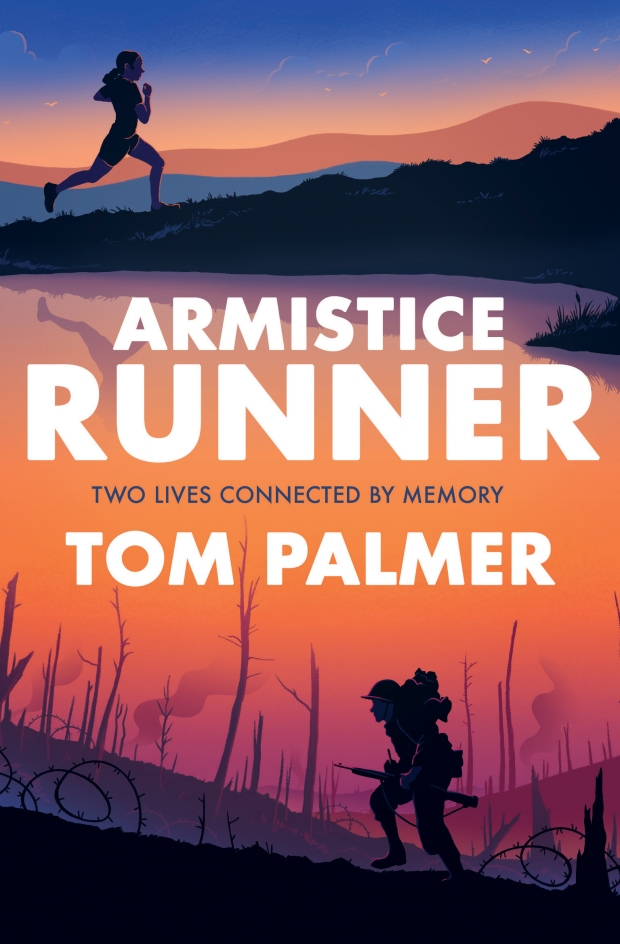
It is with great pleasure to host Tom Palmer on The Reader Teacher today with his guest post sharing his ten ways to encourage children and young adults to become engaged with the 75th anniversary of D-Day.
D-Day Dog is a beautifully written and compelling novel written for readers aged 9+, and is perfect for the commemoration of the 75th anniversary of the D-Day landings.
Jack can’t wait for the school trip to the D-Day landing beaches. It’s his chance to learn more about the war heroes he has always admired – brave men like his dad, who is a Reserve soldier. But when his dad is called up to action and things at home spiral out of control, everything Jack believes about war is thrown into question. Finding comfort only in the presence of his loyal dog Finn, Jack is drawn to the heart-wrenching true story of one particular D-Day paratrooper. On 6 June 1944, Emile Corteil parachuted into France with his dog, Glen – and Jack is determined to discover their fate…
A gripping and poignant celebration of the incredible bravery of the D-Day soldiers and the unbreakable bond between man and his best friend.
D-Day was one of the most significant days in the history of Europe and the world. The beginning of the end of Nazi Germany. On June 6th this year, Europe will be celebrating the 75th anniversary of D-Day. There are international, national and local events that will help teachers work with children and young adults to explain the significance of the day, along with books, resources, films and websites.
- Watch the news. On 5th and 6th June there will be extensive news coverage of commemorative events in Portsmouth and Normandy, including the MV Boudicca sailing with 300 D-Day veterans from England to France on the same journey they made exactly 75 years before.
- Get hold of a special edition £2 coin to mark the D-Day 75th anniversary, featuring a map of the D-Day landing beaches. Something for children to hold onto and remember and maybe give to their own children on the 100th anniversary of D-Day in June 2044?
- Go to your local public library and check out some of the books about D-Day in the history section. Some books have amazing photographs in them and first-hand accounts. Most public libraries will have several books on the shelves about WW2 and D-Day.
- Visit The D-Day Story, a fantastic museum in Portsmouth with a permanent exhibition that does a great job focussing the mind on the planning and actioning of D-Day. They’ll be hosting special events from 5th to 9th www.theddaystory.com/
- Go online and search for D-Day links to where you live. The D-Day Story has an interactive map to help you do that: https://theddaystory.com/d-day-on-your-doorstep-interactive-map/. The Imperial War Museum’s amazing online collection allows you to search for images and recordings of the men and women who took part in D-Day and made it home to be able to tell their story: https://www.iwm.org.uk/collections
- Look out for films on TV, including The Longest Day, Saving Private Ryan and Storming Juno. The TV series Band of Brothers starts with D-Day and is very powerful. There will be documentaries on TV too. But make sure what you are watching is age-appropriate.
- From 1st to 9th June the Imperial War Museum will retell the extraordinary land, air and sea story through their Second World War collection and three historic sites, HMS Belfast, IWM Duxford and the Churchill War Rooms, which experienced first-hand the events of D-Day. https://www.iwm.org.uk/visits/d-day75
- There will be events in towns and cities all over the UK.Some places will witness flypasts of significant aircraft. There will be parties. And many airmen, seamen and soldiers will be remembered in their home counties. Check out your local newspaper’s website for information.
- Read Tom Palmer’s children’s book, D-Day Dog, about a boy who joins a school trip to Normandy where he finds out hard facts about the events of 6th June 1944.Use D-Day Dog as a class read. There are free videos, activities and other resources for schools at http://tompalmer.co.uk/dday-dog/. You can contact Tom for free posters and bookmarks for all your pupils too.
- Some of you might be going to France for your summer holidays.If so, why not travel via Portsmouth and stop for an hour or two to visit some of the key D-Day historic sites and museums in Normandy. Visit the Normandy tourist information site for more details: http://en.normandie-tourisme.fr/things-to-do/sites-and-attractions/d-day-and-the-battle-of-normandy-113-2.html

Tom Palmer, author of D-Day Dog
Big thanks to Tom for his brilliant guest post highlighting ten different ways to commemorate and be involved in the 75th anniversary of this momentous day.
Thanks too to Kirstin and the team at Barrington Stoke for sending me a copy of D-Day Dog.
Mr E
D-Day Dog is available now to pre-order online and from any good independent bookshop.



